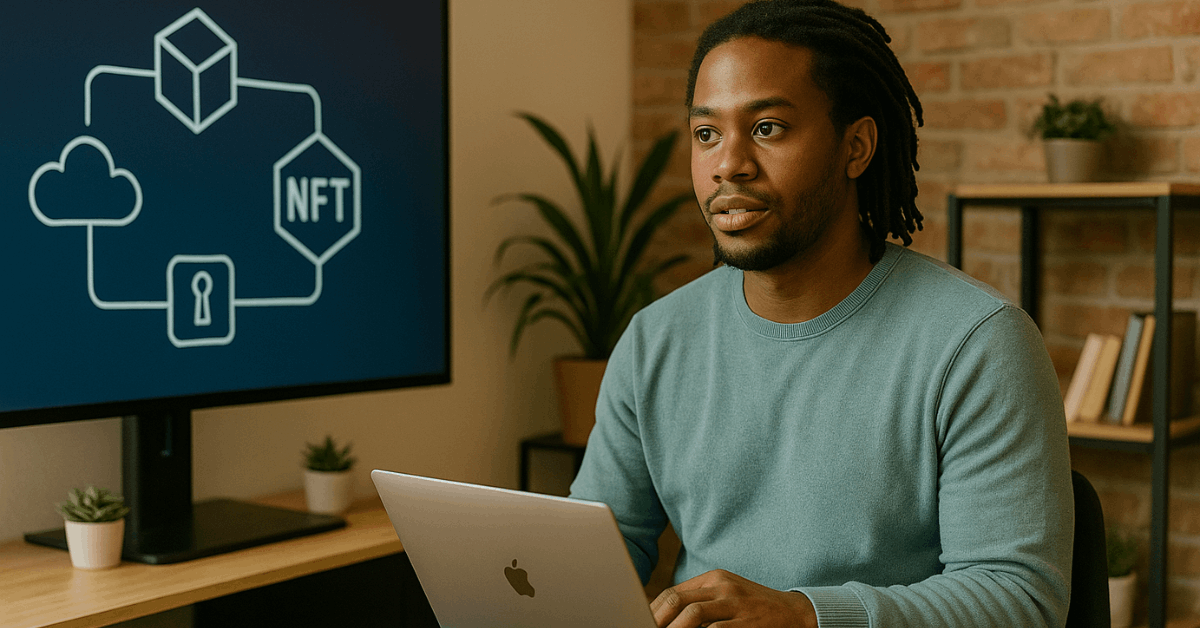Blockchain is no longer just a technology for cryptocurrency enthusiasts. It has grown into a practical tool that is improving how people manage money, health, and identity.
Many industries now depend on blockchain to offer better transparency, security, and control. In this article, you will explore five major blockchain innovations already impacting your daily experience.
1. Decentralized Finance (DeFi) – Reshaping Banking and Lending
DeFi is one of the clearest examples of blockchain changing how you use money. Instead of using a traditional bank, you can lend, borrow, or save with DeFi platforms directly.

DeFi uses smart contracts to handle financial services. These contracts are coded instructions that execute automatically. You don’t need banks or credit checks to get loans. Instead, DeFi allows for peer-to-peer lending, earning interest, and swapping tokens instantly.
Platforms like Aave, Compound, and Uniswap are among the most trusted in this space. They let you earn yield by depositing digital assets or borrowing without a middleman. These services are accessible with just a digital wallet, offering faster access than most banks.
DeFi is especially useful in countries with limited banking services. People gain financial independence by using just a smartphone and internet connection. According to Ethereum.org, DeFi is expected to grow as more people seek alternatives to centralized finance.
2. Blockchain in Healthcare – Data Privacy and Medical Access
Blockchain is solving some of healthcare’s biggest issues. From medical record privacy to faster insurance claims, it makes managing health data easier and safer.
Patient records are often scattered across clinics and hospitals. Blockchain allows health data to be stored securely in one place, with you in control of who can see it. This reduces paperwork and prevents miscommunication between providers.
Blockchain helps stop healthcare fraud by tracking claims in a transparent way. Hospitals and insurers can verify medical bills instantly, improving efficiency. Privacy remains intact because only authorized parties can access the records.
Platforms like Medicalchain and Patientory lead this innovation. They ensure your medical history is portable, encrypted, and tamper-proof.
3. Supply Chain Transparency – From Farm to Table
People want to know where their products come from. Blockchain allows you to track goods in real-time, giving you more confidence in what you buy. Every step of the supply chain can be recorded on the blockchain.
This includes who made the item, when it was shipped, and how it was stored. You can verify if your food is organic or if your clothing is ethically sourced. Blockchain helps spot problems fast. If there’s contamination in a batch of food, companies can identify the source instantly. This minimizes waste and improves public health safety.
IBM Food Trust and VeChain are platforms used by major companies to trace supply chains. For example, Walmart uses blockchain to trace leafy greens, reducing outbreak investigation time from days to seconds.
This innovation builds trust between businesses and consumers. People can scan QR codes to see a product’s journey. As a result, blockchain strengthens accountability and reduces fraud.
4. NFTs and Digital Ownership – Redefining Content and Identity
Non-fungible tokens (NFTs) are changing how you interact with digital content. These tokens prove ownership of unique digital assets like art, music, and credentials. NFTs are not limited to expensive art sales.
They’re used in gaming, identity verification, and virtual memberships. Unlike regular files, NFTs cannot be copied or replaced, which adds real value to your ownership. NFTs let creators earn royalties automatically.

For instance, an artist can receive a portion of resale profits without needing a third party. This empowers creators and improves transparency. You can also use NFTs as proof of attendance or access to exclusive content.
Projects like POAP and Lens Protocol create social and professional identity layers using NFTs. According to Ethereum.org, NFTs will play a bigger role in how you manage your digital identity. This includes education, employment history, and personal records.
5. Blockchain for Digital Identity and Voting
Secure identity and fair voting are critical to digital life. Blockchain offers solutions that put you in control of your identity and protect democratic processes. Self-sovereign identity means you manage your credentials without relying on a central authority.
You share only the data needed, not your entire personal profile. This protects your privacy and reduces risks of identity theft. Digital voting with blockchain ensures that votes are secure, transparent, and verifiable.
Once recorded, votes can’t be altered, which adds trust to the process. It also simplifies participation for citizens abroad or those with limited mobility. Countries like Estonia are using blockchain for digital IDs. Projects such as Civic, ID2020, and Voatz offer identity and voting tools based on blockchain. These tools are already in pilot testing across the U.S. and Europe.
Blockchain voting can reduce costs and speed up election results. It also increases voter turnout, especially among younger and remote populations. This innovation strengthens democratic access while improving efficiency.
Other Technologies Supporting These Innovations
These five innovations rely on additional tools to work efficiently. Smart contracts and sustainability developments are two important areas. Smart contracts are the logic behind blockchain automation.
They run actions like payments, document transfers, or notifications without human input. This makes systems more reliable and removes the need for middlemen. Sustainability is another key focus. Blockchains like Tezos and Algorand use energy-efficient proof-of-stake models. These reduce the carbon footprint associated with blockchain transactions.
Government regulation is evolving. Countries like Japan and the UAE lead in adopting pro-blockchain frameworks. These laws help grow innovation while protecting users. Blockchain keeps expanding into areas like education, social media, and real estate. These applications are expected to grow rapidly in the next five years.
Final Thoughts: Blockchain Is Already Part of Your Life
The blockchain revolution is happening whether you see it or not. It’s transforming how you manage money, identity, and data.
From hospitals to grocery stores, blockchain is making systems smarter and more secure. Understanding these innovations gives you the edge to participate in the digital shift confidently.



